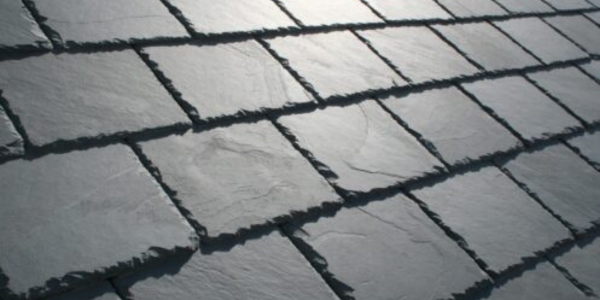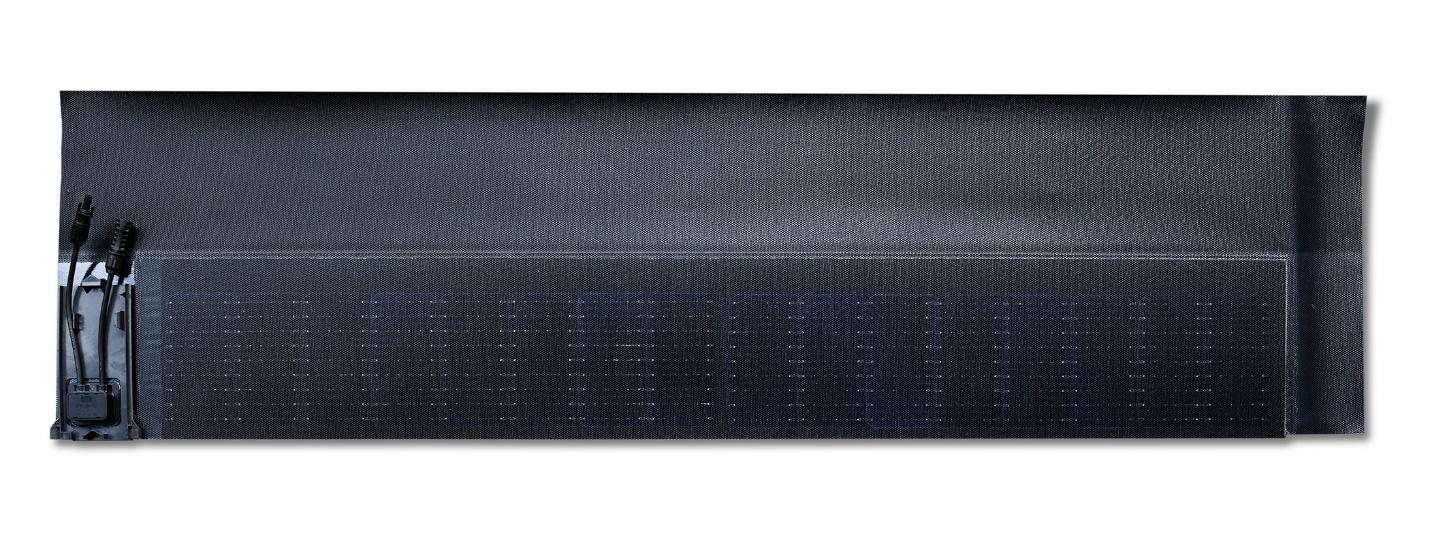To slate or not to slate

By Nick Post, KPost.
Understanding the longevity of slate versus synthetic slate roofs.
Slate roofs have been a popular choice for lavish homes since the 1300s because they give a luxurious and classic edge to a house. These roofs rose in popularity in the U.S. around the 1600s and have remained in high demand ever since. Slate roofs are extremely durable, and the look is difficult to replicate with any material other than slate, making it unique. Now, there is an alternative to slate roofs that provide similar results. Synthetic slate shingles have recently entered the market. These synthetic shingles look like real slate but have none of the potential difficulties real slate owners experience. KPost is familiar with both types of slate and has prepared this comparison so you can make the best decision for your home.
Why would you want a slate roof?
Slate is a natural shale-type sedimentary rock. Here in the U.S., it’s found predominantly in New York, Vermont, Pennsylvania and Virginia. Homeowners often choose it as a roofing material for many reasons. Among these is the fact that slate roofs are waterproof and fireproof. They’re also mold-resistant and work well to insulate your home from the elements. Slate roofs boast some of the best longevity you’ll get with any roofing material. A well-built slate roof can last for up to two hundred years. So, if you want to install a roof, you’ll never need to replace it in your lifetime, slate is a perfect solution.
What are synthetic slate roofing shingles?
Synthetic slate roofing shingles are injection-molded out of petroleum-based materials like rubber or plastic. Importantly, most manufacturers use molds cast using real slate shingles. This allows synthetic slate roofing shingles to closely mimic the randomized patterns you’d find in real slate shingles. In most cases, it’s difficult to tell the difference between a roof made of synthetic slate and one that uses the real thing. There is even synthetic slate shingles made of recycled materials for more environmentally conscious homeowners.
Choosing between slate and synthetic slate
Since slate and synthetic slate shingles offer an all-but-identical appearance, it may not seem easy to choose between them. However, the decision for most homeowners comes down to four main differences between these materials.
1 - The weight of the product
Installing a slate roof is like piling stones on top of your home. Slate is extremely heavy, and your home might not be equipped to handle it. As a result, installing a slate roof might require some significant structural modifications to your home. That can add significantly to the cost of your roofing project. It can also add to the inconvenience involved and how long it will take to install your new roof.
By contrast, synthetic slate shingles are no heavier than any other type of conventional roofing material. It’s possible to install them in place of whatever roofing material you already have. Synthetic slate shingles are even lighter than architectural asphalt luxury shingle types and offer all their advantages.
2 - The expected lifespan of your roof
On average, a slate roof lasts between fifty and two hundred years. There are even examples of slate roofs on buildings in the U.S. that are far older than that. However, getting that kind of lifespan from your slate roof requires that it be installed by skilled craftsmen. Slate is by no means an easy material to work with for a roofer. It’s easy to break if you’re not accustomed to working with it. Getting the most out of a slate roof requires that its tiles have the proper overlap and tolerances between them. All those things make slate roof installation more of an art than a science.
Synthetic slate shingles are far easier to work with and are more forgiving than real slate. However, they won’t last nearly as long. On average, you can expect about fifty years out of a synthetic slate roof. So, it may not be the last roof you ever install on your home, but it’ll outlast most other conventional roofs.
3 - Your new roof’s warranty
Another factor that may influence your decision between slate and synthetic slate shingles is your new roof’s warranty. Since real slate is a naturally produced material, it typically doesn’t come with a manufacturer’s warranty. That means if there are any unseen defects in your slate roof, you’ll end up paying to repair them yourself. Plus, it’s often difficult to tell if a defect in your slate roof the result of a problem with the slate is itself. A single misaligned nail can put pressure on a slate tile and lead to its premature failure. There are also countless other near-invisible ways that slate roof tiles can get damaged during installation. This could leave you on the hook for all kinds of repair costs, especially if you choose an inexperienced installer. Synthetic slate shingles, on the other hand, come with warranties against manufacturing defects. This means if the materials used in your synthetic slate roof fail prematurely, the manufacturer will cover the cost.
4 - The cost of your new roof
The final deciding factor between real slate and synthetic slate shingles is their cost. On average, a slate roof will cost between $15 and $30 per square foot. Those costs can rise even higher if your home has an especially complex roof shape or challenging installation conditions. That, of course, doesn’t include any structural modifications your home needs to support a slate roof.
A roof made of synthetic slate shingles should only cost between $10 and $12 per square foot. Those costs can rise with shifts in the supply industry, but rarely does that price point go above $20 per square foot. This makes synthetic slate shingles comparable in price to other common luxury shingle options. However, there are no other luxury shingle options that will outlast synthetic slate shingles. You can expect to pay around double for a real slate roof versus a synthetic one.
Original article and image source: KPost
Learn more about KPost Roofing & Waterproofing in their Coffee Shop Directory or visit kpostcompany.com.
About KPost Roofing & Waterproofing
KPost Company is an industry-leading commercial and residential contractor who provides its customers with a variety of services covering the entire building envelope.










Comments
Leave a Reply
Have an account? Login to leave a comment!
Sign In